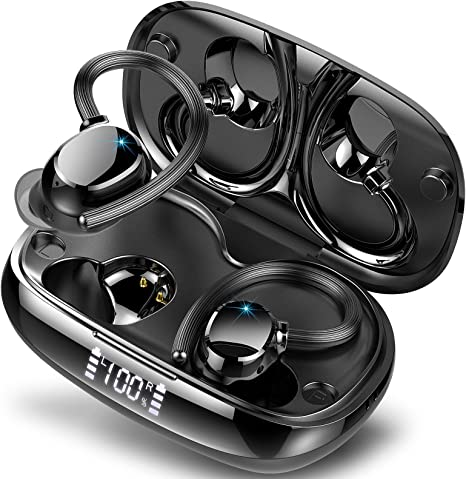You’re in the zone. The beat drops just as your feet hit the pavement in a perfect, powerful rhythm. You’re flying. It’s the final push, the moment where personal records are broken. Then, it happens. A subtle shift, a loss of seal, and suddenly one of your earbuds is dangling by its wire or, worse, bouncing onto the unforgiving asphalt. The immersive soundstage collapses, the driving beat is gone, and your flow is shattered. If you’ve ever worked out with music, you know this scenario all too well. It’s a tiny technological failure, but it feels like a personal betrayal. Why is it so hard to design an earbud that simply stays put when we move?

The answer lies in a complex dance between anatomy, physics, and design—a field known as ergonomics, with a healthy dose of biomechanics. Our ears are marvels of individuality, with unique curves, folds, and dimensions. The outer ear, or auricle, is a landscape of ridges and valleys like the helix, antihelix, and concha. A standard, round earbud that relies solely on friction inside the ear canal is playing a game of chance against this complex topography. For some, it might fit snugly. For many others, it’s a recipe for failure.
When you run, jump, or lift, your head generates a surprising array of forces. There’s the constant pull of gravity, the sharp, vertical shockwaves that travel up your body with every footfall, and the multi-directional inertial forces as you turn or pivot. A simple in-ear bud has a tiny contact patch to fight all of this. It’s like trying to keep a picture on a wall with a single, tiny tack during an earthquake.
This is where intelligent ergonomic design, like the over-ear hook seen on sport-focused models like the WUYI Q61, changes the game. It’s not just an add-on; it’s a fundamental shift in mechanical strategy. Instead of fighting a losing battle inside the ear canal, the earhook enlists the ear’s own structure as an ally. It works on three key biomechanical principles:
- Pressure Distribution: The hook wraps gently over the top of the auricle, distributing the earbud’s minimal weight and securing pressure over a much larger surface area. This eliminates the single pressure point in the ear canal, dramatically increasing comfort over long periods.
- Leverage and Anchoring: The top of your ear becomes a stable anchor point. The hook acts as a lever, actively counteracting the downward and outward forces generated by your movement. It turns your ear itself into a stabilizing tool.
- Form-Fitting Security: The use of soft, flexible materials like silicone allows the hook to conform to the unique shape of the user’s ear, maximizing contact and friction for a secure yet gentle grip.
By embracing the ear’s anatomy rather than ignoring it, this design transforms the earbud from a precarious guest into a stable partner for your workout.

But securing the earbud against the forces of motion is only half the battle. The other, equally formidable enemy is moisture. Sweat, rain, and humidity are the natural foes of all electronics. This is where a cryptic code, IPX7, enters the arena as your device’s primary defense. It’s often marketed as simply “waterproof,” but what does it scientifically mean?
The “IP” stands for Ingress Protection, a universal standard (IEC 60529) that grades a device’s resistance to intrusion from solids and liquids.
* The first digit (replaced here by ‘X’) rates protection against solids like dust and dirt. ‘X’ means it hasn’t been officially rated for dust, which is common when the focus is on liquid protection.
* The second digit, ‘7’, is the critical one for liquid protection. On a scale from 0 (no protection) to 9 (high-pressure, high-temperature water jets), a rating of 7 is incredibly robust. It certifies that the device can be fully submerged in up to 1 meter (about 3.3 feet) of fresh water for 30 minutes without harmful ingress.
Achieving this isn’t magic; it’s meticulous engineering. It involves using watertight seals on all seams, protective mesh over microphone and speaker ports, and often applying a hydrophobic nano-coating to internal components, which causes water to bead up and roll off. For an athlete, an IPX7 rating translates to complete peace of mind. It means your earbuds can handle the sweatiest workout, a run in a torrential downpour, or an accidental drop in a puddle without flinching.
So, with a design that anchors firmly and a shield that repels moisture, have we achieved the perfect sport earbud? As any designer will tell you, engineering is an art of compromise. The very features that provide security for one user might feel different to another. For example, one reviewer of the Q61, Unique1, found the earhooks “too flimsy.” This highlights the delicate balance between flexibility for a universal fit and rigidity for a feeling of absolute security. A hook that is too stiff might be uncomfortable for some ear shapes, while one that is too flexible might not inspire confidence in others. Material choice, thickness, and shape are all variables in a complex equation aimed at satisfying the widest possible range of users.

This pursuit of the perfect active-fit has led to a fascinating evolution in form factors. We now have bone conduction headphones that bypass the ear canal entirely, open-ear clip-on styles for situational awareness, and various winged tips and fins that offer a middle ground between a simple bud and a full hook. Each design represents a different philosophy on how to solve the core ergonomic challenge.
Ultimately, the unshakeable beat you crave during a workout is the product of an invisible but intense scientific effort. It’s a deep understanding of the human body in motion, a mastery of materials, and a precise defense against the elements. The next time you lock in a pair of sport earbuds and they stay exactly where they belong, mile after mile, know that it’s not just good luck—it’s great science.




